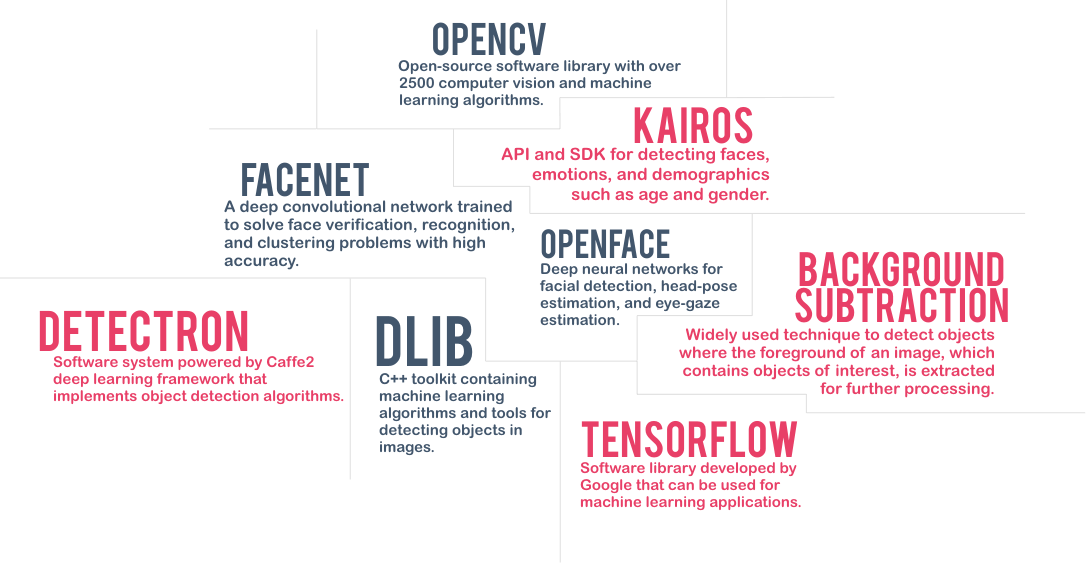Share your requirements and we'll get back to you with how we can help.
Thank you for submitting your request.
We will get back to you shortly.
Video Analytics: Insights from Video Footage
As video content becomes increasingly mainstream, the capability to rapidly extract intelligence from live and recorded footage will be valuable. Applying machine learning algorithms to video feeds, we break down the raw footage to elicit information that can improve business outcomes in real time.
Apart from security, video analysis finds application in product marketing, patient care, transportation, and multiple other areas. Insights from video content analysis are being increasingly used to transform operations and drive efficiency in these sectors.
Application of Video Analysis

Perimeter Surveillance
Thermal cameras connected to video analytics software can detect movement even in darkness and warn of trespass in real time. Security staff can visually verify the situation and take relevant action.

Traffic Monitoring
Object identification in live traffic streams reveal vehicle pile-ups and possible road congestion. License plate recognition can automate entry and exit at parking lots or enable free traffic flow on toll roads.

Attendance Tracking
Staff need not carry ID cards. Cameras capture them entering the workspace and facial recognition systems identify individuals to automatically mark their attendance.

Store Optimization
Video analytics serves to identify hotspots within retail outlets from CCTV recordings. Endcaps and shelf layouts can be arranged accordingly. Video-based people counting helps retailers adjust staff levels relative to footfall.

Queue Monitoring
Analysis of live video streams from customer service desks or checkout counters helps detect crowd formation. This allows management to proactively step in to reduce wait times and crowding at customer service points.
Model Problems in Video Analytics Applications
Video Analytics in Retail
In-store video analytics holds the potential to optimize store operations and improve product sales. From gender recognition to heat map and behavior analysis, video data can be subjected to machine learning algorithms to identify objects, detect movement, and recognize patterns enabling multiple insights for a retailer.
- Determine in-store customer demographics.
- Measure foot traffic to identify the busy times of day.
- Discover the common routes that shoppers take through the store.
- Identify hotspots to display promotions or position endcaps.
- Spot theft and reduce revenue loss.
- Track eye-gaze movement for different shelves.
- Detect viewership of digital signages.

Video Analysis for Security
The most common application of video analytics lies in ensuring security. Feeds from surveillance cameras are analyzed in real time to detect untoward events and prevent security breaches in a multitude of settings.
- Detect and warn about unauthorized entry.
- Identify vehicle/people in restricted areas/warehouses/loading docks.
- Recognize behavior that may precede acts of theft or vandalism.
- Detect unusual entry/exit of large numbers of people.
- Track visitor movement within facilities and provide alerts when people lose their way.
- Sound alarm when occupancy level exceeds allowable limits.
- Detect vehicles traveling in the wrong direction such as entering an exit-only lane.

IoT and Video Analytics
Integration of video analysis with an IoT application enables more sophisticated decisions. When cameras become IoT sensors, a much wider range of inputs can be collected for analysis. For instance, replacing beacons with cameras to locate and track visitors in a retail store provides additional information such as demographic data. Within organizations, video-enabled IoT solutions can automate attendance tracking as well as monitor activities of employees and visitors.
In a smart manufacturing unit, quality-control monitoring with real-time video analytics processed on the edge helps to detect and avoid costly defects. The quick analysis of video data at the edge localizes decision making, reducing the latency significantly. Edge processing also enhances security and saves bandwidth by eliminating the transmission of data to the cloud. Additionally, identifying and tracking human behavior at workstations or production floors allows to identify non-productive work hours.

Tools and Techniques for Video Analysis
OpenCV
Open source software library with over 2500 computer vision and machine learning algorithms.
TensorFlow
Software library developed by Google that can be used for machine learning applications.
Kairos
API and SDK for detecting faces, emotions, and demographics such as age and gender.
Detectron
Software system powered by Caffe2 deep learning framework that implements object detection algorithms.
OpenFace
Deep neural networks for facial detection, head-pose estimation, and eye-gaze estimation.
Background Subtraction
Widely used technique to detect objects where the foreground of an image, which contains objects of interest, is extracted for further processing.
FaceNet
A deep convolutional network trained to solve face verification, recognition, and clustering problems with high accuracy.
Dlib
C++ toolkit containing machine learning algorithms and tools for detecting objects in images.


